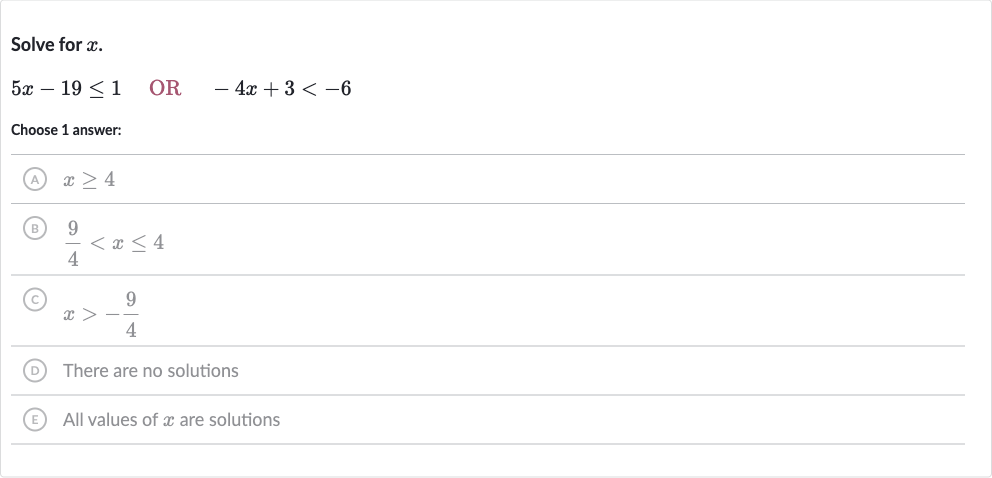Full solution
Q. Solve for . OR Choose answer:(A) (B) (C) (D) There are no solutions(E) All values of are solutions
- Solve first inequality: Solve the first inequality .Add to both sides of the inequality to isolate the term with on one side.Now, divide both sides by to solve for .
- Isolate x term: Solve the second inequality -4x + 3 < -6.Subtract from both sides of the inequality to isolate the term with on one side.-4x + 3 - 3 < -6 - 3-4x < -9Now, divide both sides by , remembering to reverse the inequality sign because we are dividing by a negative number.x > \frac{-9}{-4}x > \frac{9}{4}
- Solve second inequality: Combine the solutions from Step and Step to find the solution set for .From Step , we have .From Step , we have x > \frac{9}{4}.The solution set is the intersection of these two inequalities, which is \frac{9}{4} < x \leq 4.
More problems from Is (x, y) a solution to the system of linear inequalities?
QuestionGet tutor help
QuestionGet tutor help
QuestionGet tutor help
QuestionGet tutor help
QuestionGet tutor help
QuestionGet tutor help
QuestionGet tutor help
QuestionGet tutor help

